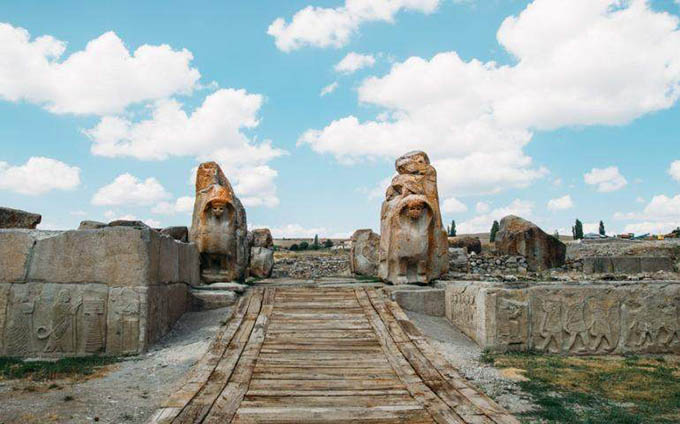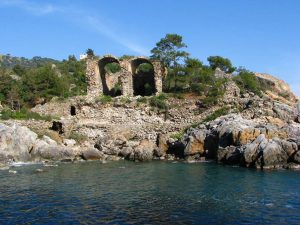Ancient Cities in Turkey
Alacahöyük is located 45 kilometres south of Çorum and 17 kilometres northwest of the Alaca township. The Alacahöyük village is 34 kilometres away from Boğazköy and 210 kilometres away from Ankara.
This tumulus, or mound, was first introduced to the world of science by W.C. Hamilton in 1835 and after that time, it became a place frequented by scientists who visited Central Anatolia. In 1861, G. Perrot stopped by this tumulus and discovered the plan of the square tower on the left and right of the door and one of the orthostats. After this study, Perrot became the first to argue that these reliefs belonged to the Hittite period.
W. Ramsey, who made great contributions to Anatolia’s historical geography, studied the tumulus together with Wilson in 1881 and found a few other reliefs. In 1893, E. Chantre came to the tumulus and found the square corridors among the sphinx, the second door at the end and the door frames. Chantre took the plaster casts of these reliefs and by judging from their themes, Chantre claimed that this could be the door of a temple rather than a palace. Chantre studied the lions on the south of the door with the sphinx and believed that the inscription found on one of these doors was Phrygian writing. Later H. Winckler, who had been working in Boğazköy since 1906, decided to start a search in the tumulus at the invitation of Makridi Bey and İstanbul Archaeology Museum Director Halil Ethem Bey. In 1907, Makridi Bey worked for 15 days at the door with the sphinx and discovered a few new orthostats in front of the door. After drilling a few places in the tumulus, he saw the poterni (entrance) on the northern edge of the tumulus and he compared this to the potern in Boğazköy. The first systematic excavations of the tumulus were started by Atatürk in the Republican era. Hamit Zübeyr Koşay, Remzi Oğuz Arik and Mahmut Akok from the Turkish History Institution began excavations in 1935 which lasted until 1983. The excavations were interrupted this year and in 1997, they were started again by Professor Aykut Çınaroğlu.
Studies and excavations tell us that there were four layers of cultures that existed in Alacahöyük, which was inhabited continuously since the Chalcolithic (copper) Age. These four layers are the Chalcolithic, Old Bronze, Hittite and Phrygian ages, and each of them has 15 different architectural layers.
The Chalcolithic Age: 4000-3000 B.C., layers 15-9
Old Bronze Age: 3000-2000, layers 8-5
Hittite Age: 1800-1200, layers 4-2
Phrygian Age: Since 750 B.C. in the first layer
The first settlement in the tumulus set up in the Chalcolithic Age was established on an area looking to the south, above sea level, and its northern parts were protected with small hills. In this age, architecture only meant stone foundations and sun-dried bricks. The roofs were covered with reeds and compressed soil.




